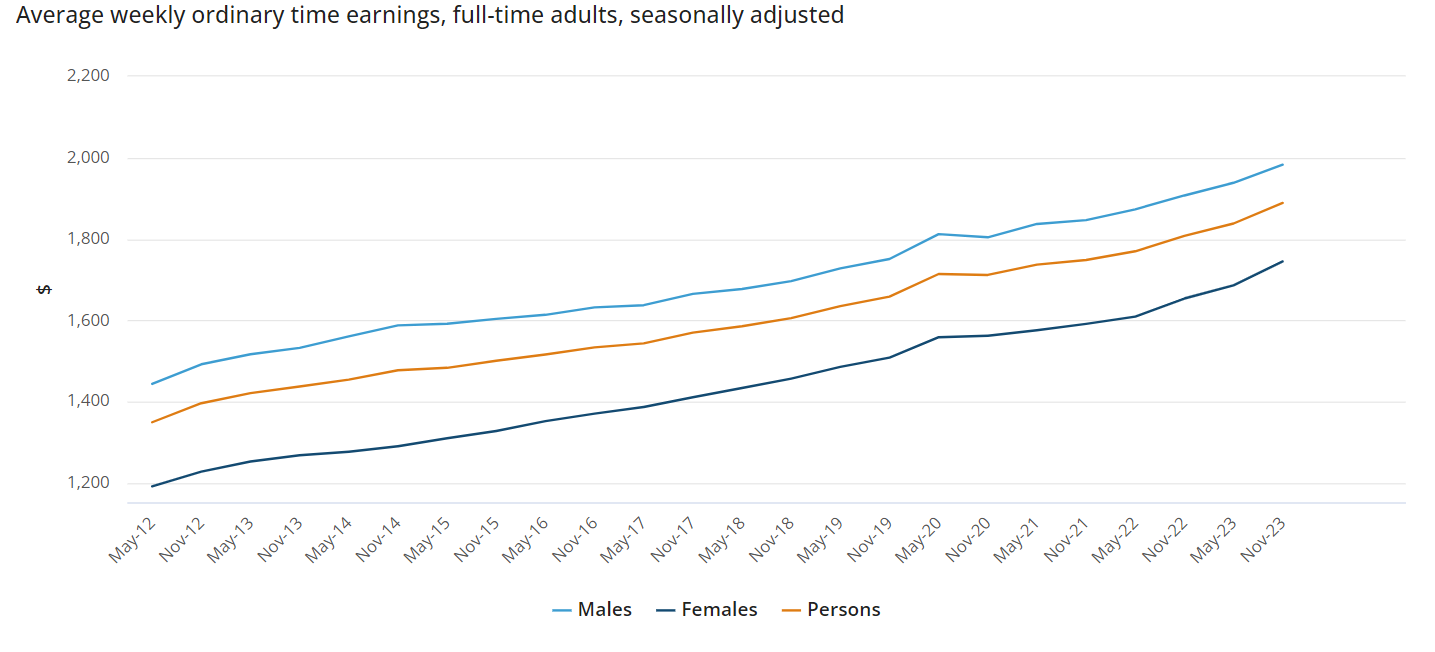

Average weekly ordinary time earnings for full-time adults experienced a significant rise, marking the most robust annual growth in a decade, according to the latest ABS figures.
“The annual increase of 4.5%, or $81 a week, was the strongest since May 2013, other than a brief spike in average earnings early in the COVID-19 pandemic,” said Bjorn Jarvis (pictured above), ABS head of labour statistics.
The surge in average earnings is supported by an increase in the wage price index, which climbed by 4.2% in the year to the December quarter. This rate signifies the highest annual rise in underlying wage growth since the March quarter of 2009. Both the private sector, with a 4.4% rise, and the public sector, up by 4.9%, contributed to the growth.
The gender pay gap in average weekly ordinary full-time earnings also saw a reduction, narrowing, from 13% to 12% – the lowest level recorded.
“This was the third drop in the gender pay gap in a row, down to a new record low,” Jarvis said in a media release. “This narrowing in the gap reflected stronger growth in average full-time earnings for women, 3.5% over the past six months, compared with 2.3% for men. Annual growth was also more pronounced for women at 5.5%, compared with 4% for men.”

The disparity in average weekly earnings across regions and industries remains evident, with the highest wages reported in Western Australia ($2,108) and the Australian Capital Territory ($2,080). The lowest were recorded in Tasmania ($1,670) and South Australia ($1,735).
The mining industry continued to lead in average earnings, at $2,952 a week for full-time employees, while the accommodation and food services ($1,397) and retail trade industries ($1,435) lagged.

Average earnings for part-time employees also experienced significant growth, contributing to a 3.9% increase in average earnings for all employees in November 2023.
“The gender pay gap for all employees, including both full-time and part-time employees, is much larger than the full-time measure, with women more likely to work part-time,” Jarvis said. “That record-low gap was 28.1% in November 2023, down from 28.6% in May 2023.”
For more details, read Average Weekly Earnings, Australia, November 2023.
Get the hottest and freshest mortgage news delivered right into your inbox. Subscribe now to our FREE daily newsletter.
